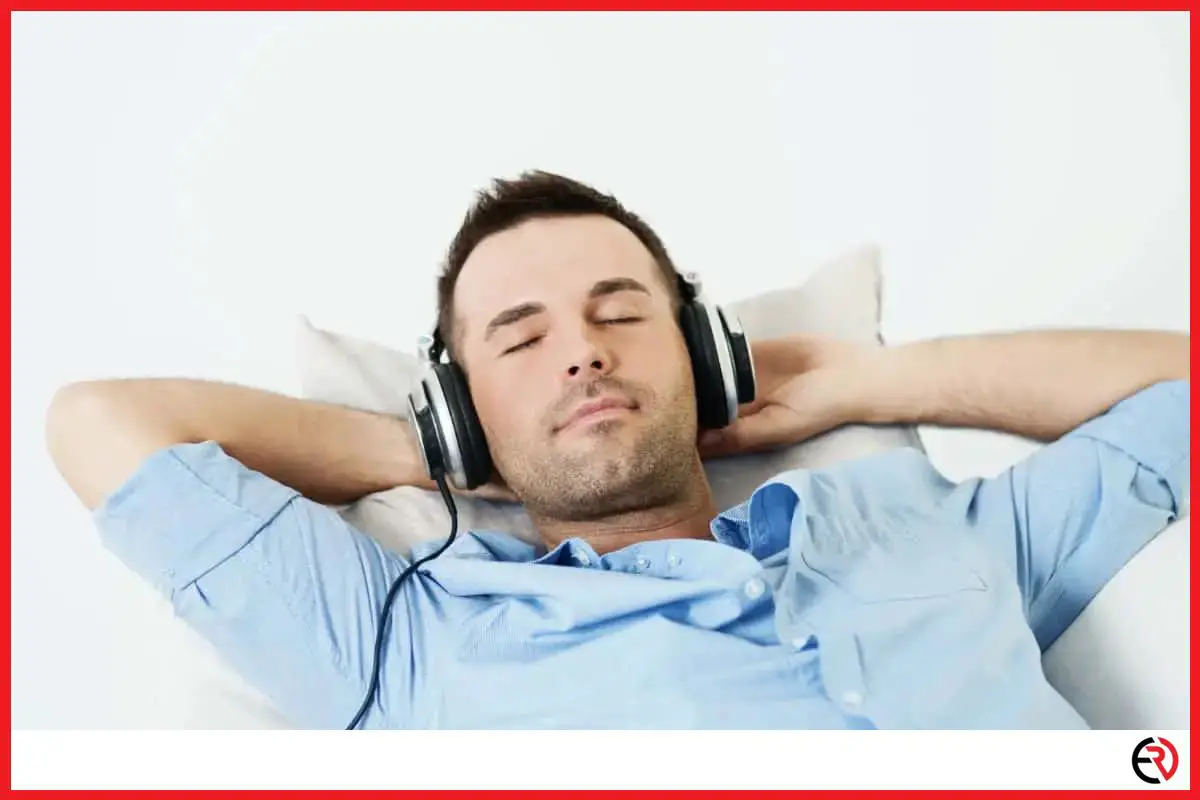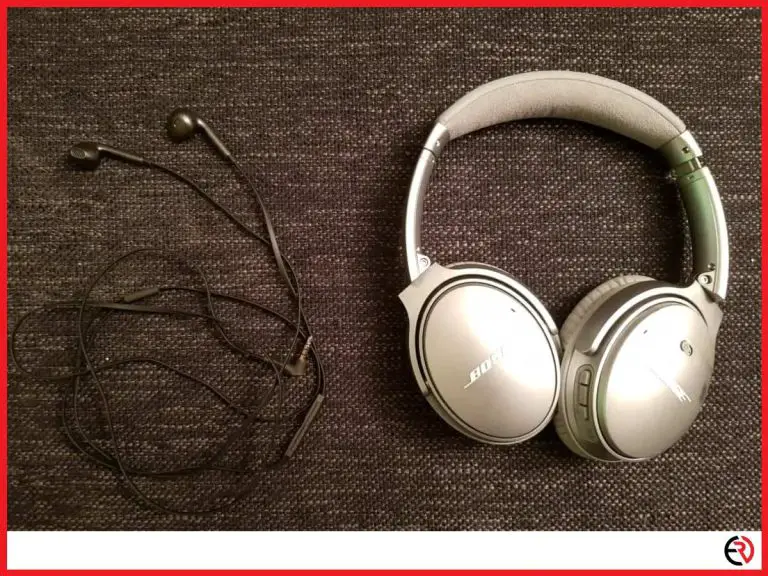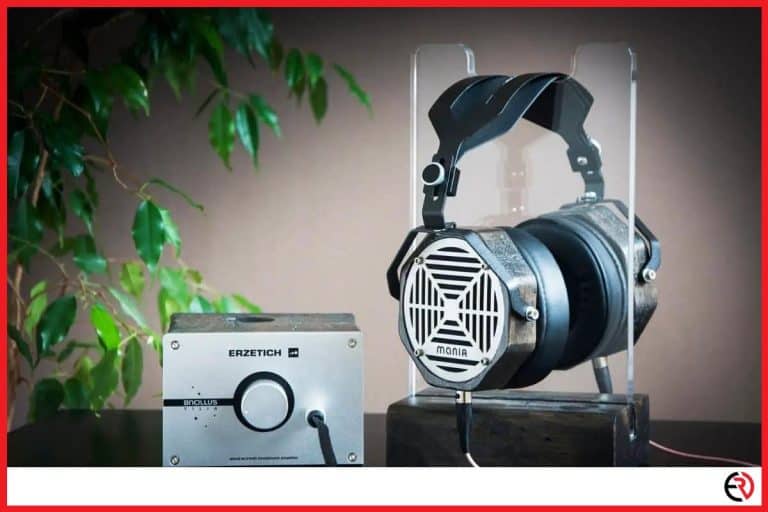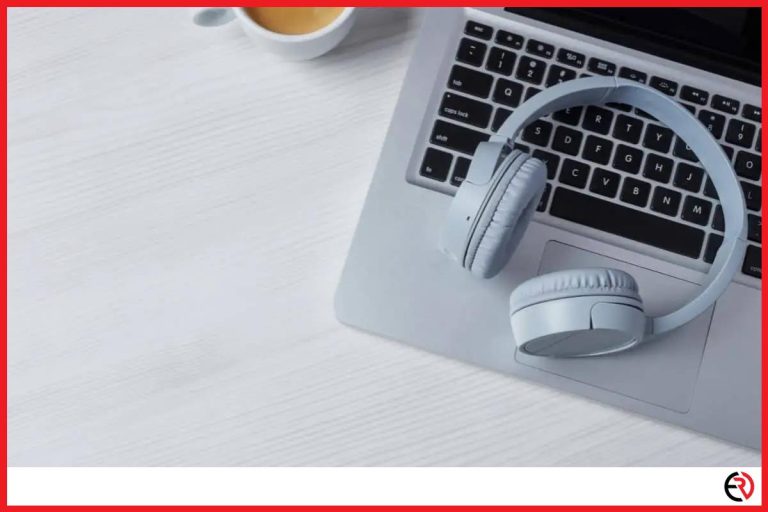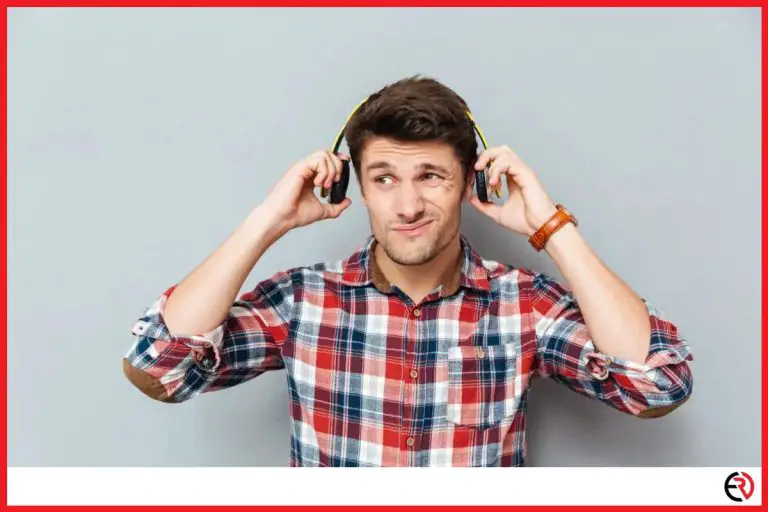Falling Asleep With Headphones On? What the Science Says
This post may contain affiliate links which means that, if you choose to make a purchase, I may earn a small commission at no extra cost to you.
Silence isn’t always silent. Horns honking and a dog barking, the sounds of local nightlife keep you awake. As you reach for a set of headphones to help drown out the outside world, have you ever wondered if it was a good thing if it was really helping you sleep? Without the added noise to drown out the outside world, sometimes it can make it hard for even the easiest sleeper.
What the science says about falling asleep with headphones on: Science has proven through independent studies that sleeping with music playing can help you fall asleep faster and stay asleep longer. While other studies prove that using headphones at a high volume can damage your hearing, even while you are sleeping.
Certain types of music can help you to fall asleep faster without the anxiety that some people experience when trying to fall asleep. With today’s deadlines and high anxiety days, it can be hard to shut that off, and that can make it hard to fall asleep. Listening to calming music can have both physical and psychological effects that I plan to share with you here.
Benefits of Sleeping With Headphones
The benefits of falling asleep to music are numerous and documented. A study done in Hungary more than 10 years ago documented some of the benefits for students that fell asleep listening to music. Using students that had poor sleep habits, the researchers were able to show a marked improvement in sleep quality just by listening to music while falling asleep.
The same study also proved that those students with depression also showed a reduction in symptoms of their depression, which can lead to more productivity, better learning, and an all-around better outlook on life. The study concluded that listening to music while sleeping could potentially be a way to help treat insomnia.
Read about the study here.
Medical Advantages of Falling Asleep With Music
Better sleep habits can lead to a reduction in anxiety and a decrease in blood pressure, which can be very useful for those with health problems. Many people who suffer from high blood pressure are always looking for more natural ways to help bring their blood pressure down, and for some, the answer could be as simple as better, more qualitative sleep.
For people who suffer from sleep apnea (and their partners), you know that a CPAP machine can be loud, annoying, and very distracting as you are trying to fall asleep. Wearing headphones while you are going to sleep will help to drown out the sound of the sleep apnea machine. It can also help to drown out the sound of someone snoring next to you.
Certain medical conditions, such as cancer, can benefit greatly through music therapy, studies show. Trying to get through the treatments with cancer can be very stressful, both physically and mentally. Staying in a hospital for weeks on end can make it very hard to sleep as well. Having something to block out the constant noise and chatter may help you sleep better.
Psychiatric Advantages
For certain psychiatric disorders including anxiety and depression, sleeping with headphones on may help you to be able to get more restful sleep and be able to fall asleep more quickly. From using meditation while listening to soft music or even the sounds of nature, you may find that you are able to relax more and fall asleep easier in addition to faster.
However, taking medications just to fall asleep due to anxiety can actually make the issue worse. When you have to depend on medications to just be able to be calm enough to sleep, you can actually become more anxious in the long run. Finding ways to be able to fall asleep without the medication will make you feel healthier and may end up reducing your anxiety in the long run.
Calming the Mind
If you like to use visualization to help you get to sleep, using headphones can allow you to listen to things that help with your visualization exercises. For instance, if you like to visualize lying on a beach as part of your relaxation techniques, you can listen to waves hitting the shore. If you are like me and prefer the woods, you can listen to bird noises to help you relax.
Sometimes it’s not about listening to sounds or even music, but a calming voice that makes you feel less stressed and anxious. While a nervous roommate may find an issue with hearing someone talking in your room at 3 am, using headphones to listen to a podcast or stories on YouTube may be the answer to helping you sleep.
There are advantages to falling asleep with headphones on in both the short term and the long term. By not broadcasting what you are listening to may help to give those around you peace of mind as well. Some people enjoy spooky stories at night, while it may give nightmares to others, and that is the last thing you want to do to someone who lives with you.
Disadvantages of Sleeping With Headphones
While the advantages of sleeping with headphones cannot be dismissed, there are also some distinct disadvantages to take into consideration as well. From mild and short term to more serious and long term, the downsides can be pretty serious though the issues can be mitigated or avoided altogether.
Ear Wax Buildup
While this issue is more common with earbuds than headphones, certain styles of headphones can contribute to earwax buildup. While a slight build-up may not seem like that big of an issue, it can become serious enough to affect your hearing and even contribute to permanent hearing loss or infection.
While most people may not even think about earwax and its role in protecting their ears, it has a vital function. That being said, it can also accumulate as well. With some people, this is normal, and they are pretty used to cleaning their ears on a regular basis. Ear wax issues from wearing headphones is most often an issue with people who do not have to worry about cleaning their ears regularly.
When you don’t have to do something regularly, it is possible to forget entirely, which can certainly lead to buildup. This can happen more often when you are plugging your ears with something and not allowing the moisture in your ears to self regulate. You may not even notice it until it is too late, and you have an infection, or it is affecting your hearing.
While wearing headphones or earbuds for an hour or so a day may not do much to affect the health of your ears, wearing them for the equivalent to ⅓ of the day, every day, can take its toll over time. They will trap moisture in your ears, not allowing your body to self regulate things like drying out the earwax so your body can naturally expel it.
How to Avoid Problems with Earwax
If you are using headphones for a significant part of the day or night, it is helpful to get into the habit of clearing your ears once a month. After a shower is best the best time. This just helps to prevent issues before they have a chance to turn into something more serious. If you use cotton swabs to clean your ears, just be careful not to damage your eardrum in the process.
Hearing Damage
One of the biggest issues with headphone use is potential hearing damage. Sensorineural hearing loss is caused by damaging the nerves or hair cells inside the ear. This can be caused oftentimes by either listening to music or sounds that are consistently too high (above 60 dB or decibels) or close to 60 dB for long periods of time.
While watching a movie with an explosion or gunfire that reaches around 70 dB briefly probably won’t damage your hearing, listening to music that is at or above 60 dB for longer periods of time (more than 30 minutes at a time or 5-7 consecutive songs) can start damaging your hearing and can lead to lifelong issues.
It can be very frustrating to constantly have to ask people to repeat themselves or being told to turn your TV or computer down. While hearing can be corrected through the use of hearing aids, it is better to protect your hearing where possible rather than try to correct the damage done.
While teenagers are the most at risk for this, hearing damage can happen at any age. If you listen to movies or music at a high decibel, it will eventually cause hearing loss and you won’t even realize it until it is too late. You may not even realize it for years after the damage occurred.
How to Avoid Hearing Damage When Sleeping with Headphones
It is easy to avoid hearing damage when sleeping with headphones. First of all, just keep the volume down on your headphones whether you’re listening during the day or the night. Noise-canceling headphones can deliver safe levels of sound while blocking out the noises of the environment.
Additionally, at night, you should listen to a preselected assortment of music or podcasts, so you don’t accidentally stumble upon some extra loud media. This will probably help you get a better night’s sleep anyway.
Otitis Externa (Ear Infection)
One of the other major issues that wearing headphones can cause is otitis externa, which directly translates into inflammation of the external ear. Inflammation usually leads to an infection. While most people will associate ear infections with children, adults can and do get ear infections, and they are just as awful as an adult as they are as a kid.
Some of the symptoms of an ear infection are:
- Fever
- Pain in the ear
- Itchiness in the ear canal
- Discharge from the ear (this could be anywhere from clear to yellowish clear fluid)
- Swelling of the lymph nodes in the neck below the affected ear
Most infections will go away on their own with minimal intervention. If the pain is mild to bothersome but still tolerable, some of the following tips may help while you wait to see your doctor:
- Acetaminophen and Ibuprofen: These pain relieved are NSAIDs, and they can help with both pain relief and any potential swelling from the infection or inflammation.
- Warm or cool compress: A compress, whether warm or cold, can help with general pain management. If all depends on which works better for you. Heat can help to reduce swelling and improve blood flow to affected areas. Cold can help to prevent more swelling or slow down swelling by restricting blood flow to the affected area. Sometimes it is all about what makes you feel better personally.
- Sleeping upright: Sleeping upright helps by allowing the infected ear to drain. It can also shift any fluid that is in the ear to an area that may not affect the pain sensors as much. If the ear pain isn’t related to your ears, such as from a sinus infection, sleeping upright may help with that as well. Not all ear pain is related to ear infections.
How to Avoid Ear Infection From Headphones
Most people will never experience an ear infection from using headphones too much, but that doesn’t mean the risk isn’t there. If you are a frequent user of headphones, stick to using styles that do not require you to insert anything into your ear. If you wear headphones while sleeping, buy headphones that are designed to be used during sleep.
Tips for Sleeping With Headphones
While you can sleep with headphones on, there are a few things to keep in mind why doing so:
- Gamer headphones are not made to sleep in. Besides being uncomfortable to lay in, they are not designed for this. You could easily end up breaking them.
- Buy headphones made for sleeping in. This can make a big difference in your comfort and in your wallet, so you are not having to constantly replace headphones not made for sleeping.
- Use wireless headphones. The wires can get damaged during sleep or get pulled right out of the headphones if you toss and turn. If you take into account how easily we break the wires in headphones while we are awake and aware, that risk is multiplied when we are sleeping.
- Keep the volume low. High volume (above 60 dB) can potentially damage your hearing. The more often you listen at a higher volume, the greater your chances of hearing damage or loss. Even if you aren’t actively listening while you are sleeping, you are still risking damaging your hearing.
- Make sure that you do not use headphones that completely block out all outside noise. You do still need to be somewhat aware of your environment in the case of an emergency. Things like fire the smoke alarm will be your best chance of survival. If you have small children, you will want to be sure you hear them if they wake up in the night. If you can’t hear things like that, you could be putting yourself at risk.
Will Sleeping With Headphones on Break Them
If you try to sleep in headphones not designed for sleeping in, you may find they do not last the night. I have accidentally fallen asleep listening to videos while wearing a cheap set of $5 earbuds that did not survive my one hour nap.
If you need to wear headphones while you sleep, whether it is to drown out the outside world, for relaxation or because your roommate just does not appreciate your choice of music at 3 am, then getting a set of wireless headphone would be a good start.
There are also plenty of headphones made for sleeping nowadays and investing in a pair of those is better than ruining a good pair that works well with your computer. Take the time to find exactly what you are looking for and then invest more time in finding the best price.
Finding the Right Headphones for Sleeping
I have found a number of different headphones that I thought were innovative and interesting. Due to the popularity of sleeping, while listening to music or podcasts, the average consumer has a wide variety to choose from. This can be good in that you should be able to find one that works well for you, but bad because you may feel overwhelmed looking.
This list is in order from the most expensive headphones for sleeping that I found to the least expensive ones. Keep in mind that expensive does not necessarily mean better. There are so many different designs that finding the one that is right for you may involve some experimentation.
Kokoon
I found a number of different styles, but Kokoon headphones stood out among the rest. While the $340 price tag may make it out of reach for some people, its unique design warranted its inclusion on this list.
Besides the all-around design with the sleeping customer in mind, it also has an app integrated into its use as well. They use AI technology that will learn what your preferences are and sensors that can tell when you have fallen asleep and stop the audio playing. The theory behind this is that the continued audio may disturb you, and some people would certainly benefit from this feature.
The speakers themselves are built into a soft and comfortable headset that will not press on your head no matter what position you lay in. As the name suggests, it was designed to cocoon your head for added comfort while you slept. While $340 may seem like a high cost, what is good sleep really worth these days anyway?
On a side note, the Kokoon is the only one on my list that looks like a traditional set of headphones. While they may look bulky, it is because they are covered in foam to be more comfortable. They are designed to be soft and breathable to help prevent you from getting overheated while you sleep.
Utilizing Bluetooth technology, the Kokoon headphones can connect to your phone, and you would have access to their specifically developed app that can help with getting you to sleep faster. Even though it is designed to stop playing whatever you were listening to once you fall asleep, that does not mean it will leave you in silence.
The Kokoon headphones block out the outside world for you in three different ways:
- It has active noise cancellation built into it
- It also has noise isolation via a patent-pending audio seal to help block out more noise.
- Lastly, after it turns off whatever music or audio you were listening to, it then turns on white noise to help block out the world a bit more and help you to sleep with ease.
Bedphones Wireless Sleep Headphones
Designed with comfort in mind, the Bedphone Wireless Sleep Headphones lay flat against your ear, reducing the bulkiness of traditional headphones. With a design that is similar to earbuds, these earphones curl around your ear for a more secure fit.
Available from the maker’s site at just under $150, the Bedphones wireless sleep headphones are among the higher side of the midrange cost of headphones. Using Bluetooth technology, these earphones are ideal for Netflix and chill, even if that means falling asleep while you binge-watch your favorite shows.
Joseche Bluetooth Sleep Mask
For under $20 on Amazon, the Joseche Bluetooth Sleep Mask was definitely one that caught my attention. It is a sleep mask that blocks out visual disturbances with Bluetooth speakers built right into the sides of the mask.
It has adjustable velcro strap and volume adjustments and a pause/play button right on the mask itself so you can pause playback or adjust the volume as needed without reaching for your phone. The mask itself does have a nose cutout section, so for those who use a CPAP machine at night for sleep apnea, they would be able to wear this without it interfering.
The mask itself is also a bit larger than normal sleep masks, which does help to block the light better. Made from a very soft material that feels comfortable against your face and the smaller size of the speakers makes for easy sleeping with this headphone mask combination.
Buying the Right Pair of Headphones
If you’re looking to buy a pair of headphones to sleep with, then you’re going to want to do some research of your own. Everyone’s ears are different, everyone sleeps differently, and everyone wants to wear those headphones for a different reason.
Try Before You Buy
You may find a great pair of headphones at a local brick and mortar store and find that you can get it online for half the price. One of the advantages of using a brick and mortar store to find a good pair of headphones is you have the opportunity to try them on and see how they feel. Could you sleep in them, do they feel light enough, will you get too hot wearing them?
Unfortunately, this is the major downside to buying things online, the opportunity to see it in person. To be able to see how it feels. If it fits right and if it will be comfortable. It can be disappointing when you spend a great deal on a product that looks awesome online, but when it gets the item home, it seems nothing like you expected, by a long shot.
Consider Cost
Take your time to look for a better price. Even if you plan to make a same-day purchase on a site, take a few minutes to check various other sites to make sure you are getting the best possible price.
Quality is not the only thing that needs to be taken into consideration. Cost is often a huge factor in what someone plans to buy. I could tell you that a pair of Apple headphones would be the best for your money, but you shouldn’t have to save up for six months just to buy a decent pair of headphones either.
Read Positive and Negative Reviews
If you plan to buy from a site like Amazon, take the time to look into the reviews of what you plan to buy. Sometimes the reviews are regarding the seller, but oftentimes buyers will also put a lot of information into the review about what they liked or disliked about the product. Take the time to read both good and bad reviews and see if there is an underlying issue with the item.
While reviews can be very useful in helping you to decide if that product is what you are looking for, keep in mind that some people will buy things that are relatively cheap and expect it to be gold. While, yes, you will get what you pay for, it is possible to get things that are less expensive while still maintaining a decent quality.

